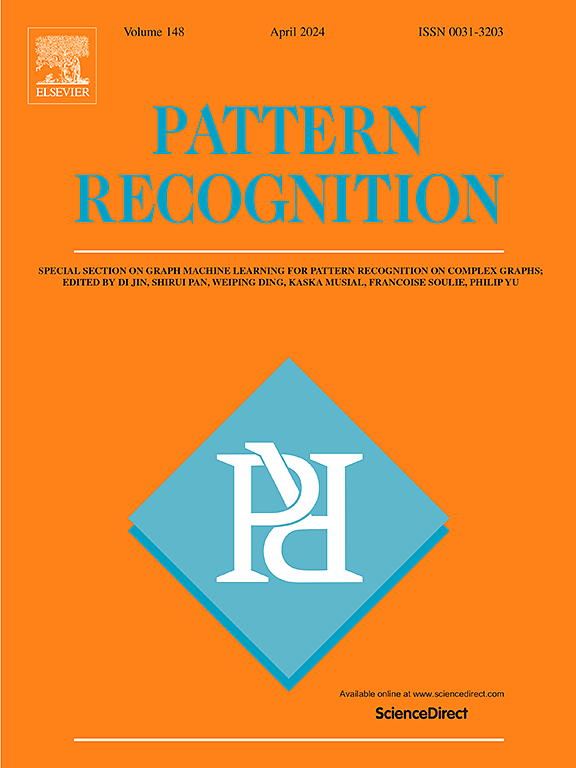Brain anatomy prior modeling to forecast clinical progression of cognitive impairment with structural MRI
IF 7.5
1区 计算机科学
Q1 COMPUTER SCIENCE, ARTIFICIAL INTELLIGENCE
引用次数: 0
Abstract
Brain structural MRI has been widely used to assess the future progression of cognitive impairment (CI). Previous learning-based studies usually suffer from the issue of small-sized labeled training data, while a huge amount of structural MRIs exist in large-scale public databases. Intuitively, brain anatomical structures derived from these public MRIs (even without task-specific label information) can boost CI progression trajectory prediction. However, previous studies seldom use such brain anatomy structure information as priors. To this end, this paper proposes a brain anatomy prior modeling (BAPM) framework to forecast the clinical progression of cognitive impairment with small-sized target MRIs by exploring anatomical brain structures. Specifically, the BAPM consists of a pretext model and a downstream model, with a shared brain anatomy-guided encoder to model brain anatomy prior using auxiliary tasks explicitly. Besides the encoder, the pretext model also contains two decoders for two auxiliary tasks (i.e., MRI reconstruction and brain tissue segmentation), while the downstream model relies on a predictor for classification. The brain anatomy-guided encoder is pre-trained with the pretext model on 9,344 auxiliary MRIs without diagnostic labels for anatomy prior modeling. With this encoder frozen, the downstream model is then fine-tuned on limited target MRIs for prediction. We validate BAPM on two CI-related studies with T1-weighted MRIs from 448 subjects. Experimental results suggest the effectiveness of BAPM in (1) four CI progression prediction tasks, (2) MR image reconstruction, and (3) brain tissue segmentation, compared with several state-of-the-art methods.
脑解剖模型预测认知功能障碍的临床进展
脑结构MRI已被广泛用于评估认知障碍(CI)的未来进展。以往基于学习的研究通常存在标记训练数据规模小的问题,而大规模的公共数据库中存在大量的结构性mri。直观地说,从这些公开的核磁共振成像(即使没有特定任务的标签信息)中获得的大脑解剖结构可以促进CI进展轨迹的预测。然而,以往的研究很少将这些脑解剖结构信息作为先验信息。为此,本文提出脑解剖学先验建模(brain anatomy prior modeling, BAPM)框架,通过对脑解剖结构的探索,利用小尺寸靶核磁共振预测认知功能障碍的临床进展。具体来说,BAPM由一个借口模型和一个下游模型组成,具有一个共享的脑解剖引导编码器,用于在明确使用辅助任务之前对脑解剖进行建模。除了编码器,借口模型还包含两个解码器,用于两个辅助任务(即MRI重建和脑组织分割),而下游模型依赖于一个预测器进行分类。在9344张无诊断标签的辅助mri上对脑解剖引导编码器进行了借口模型的预训练,用于解剖先验建模。随着编码器的冻结,下游模型随后在有限的目标核磁共振成像上进行微调以进行预测。我们用来自448名受试者的t1加权mri对两项ci相关研究进行了BAPM验证。实验结果表明,与几种最先进的方法相比,BAPM在(1)四个CI进展预测任务,(2)MR图像重建和(3)脑组织分割方面是有效的。
本文章由计算机程序翻译,如有差异,请以英文原文为准。
求助全文
约1分钟内获得全文
求助全文
来源期刊

Pattern Recognition
工程技术-工程:电子与电气
CiteScore
14.40
自引率
16.20%
发文量
683
审稿时长
5.6 months
期刊介绍:
The field of Pattern Recognition is both mature and rapidly evolving, playing a crucial role in various related fields such as computer vision, image processing, text analysis, and neural networks. It closely intersects with machine learning and is being applied in emerging areas like biometrics, bioinformatics, multimedia data analysis, and data science. The journal Pattern Recognition, established half a century ago during the early days of computer science, has since grown significantly in scope and influence.
 求助内容:
求助内容: 应助结果提醒方式:
应助结果提醒方式:


